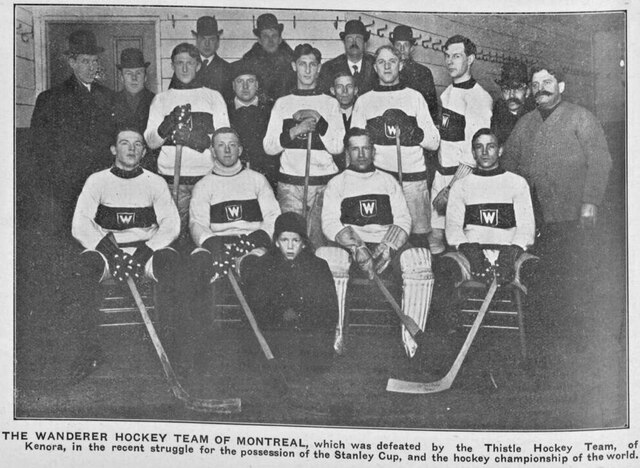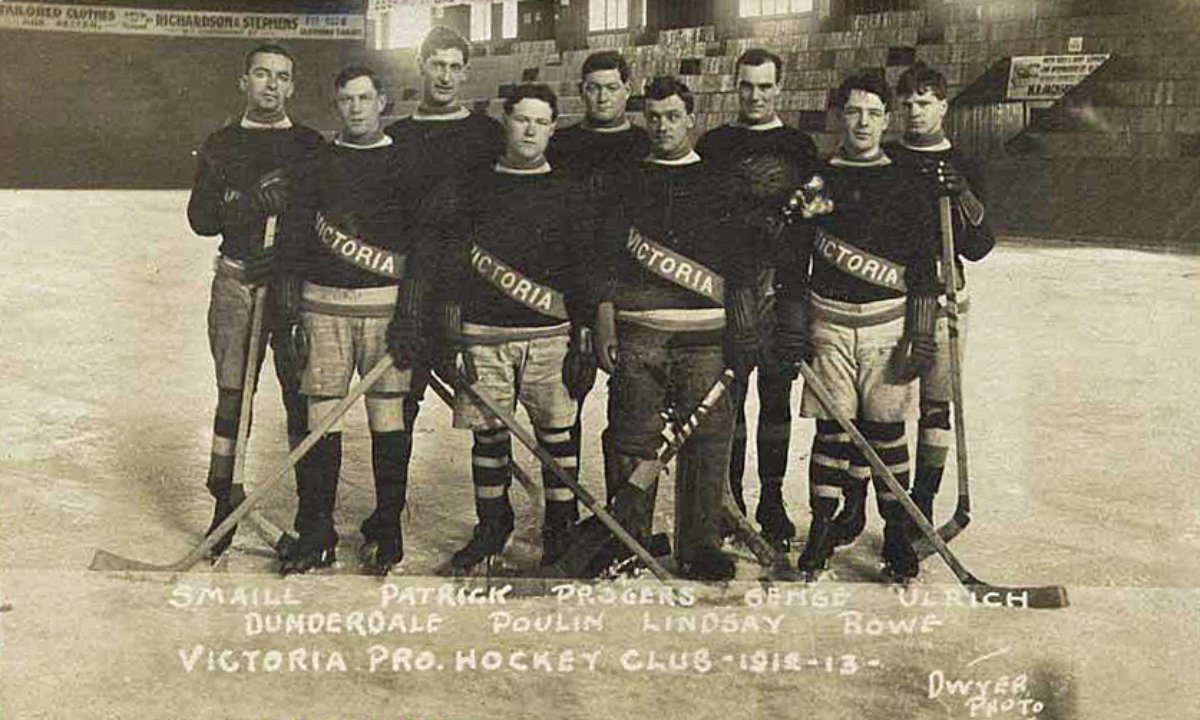Yes, that photo. It sure seems that Patrick has a good couple of inches on Genge (not counting his hair!). And being a more high profile player, I would trust his height to be more accurately recorded.
I took a closer look now at the second Wanderers photo up thread, and you can clearly see parts of Hod Stuart's skate firmly on the floor, so he's definitely not standing on anything there, and he's towering over Moose Johnson who wasn't small, and he's taller than Kennedy too. And in the Ottawa photo from 1911, you can compare Alex Currie (6'0", far left) with Bruce Stuart and they're the same height. Disregard Jack Darragh because he's clearly sitting on something.
But this makes it fairly obvious to me that somehow Hod's and Bruce's heights has been mixed up with each other somewhere along the line. This isn't really too surprising to me as for the longest time the Hockey Hall of Fame website had a picture of Bruce (in Ottawa gear) representing Hod. And if they can mix up such a thing, clearly heights are really no different thing.
Hod is also listed as being heavier than Bruce, and they look equally stocky.
Regarding the Victoria photo, yeah Patrick definitely looks taller than Genge there, but I wouldn't say it's by "a good couple of inches" unless we count his fabulous hair. It's probably 1 or 1 and a half inches or something, or at most 2. So if Patrick is 6 – 6'1" then Genge should be about 5'10" – 6.
4 inches seems like a pretty steep miscalculation, but I can't really say with certainty from where this would have come from.
I will say though that I find the quote on Genge's Wikipedia page, which is sourced from Stephen Harper's book, about him being a "dominating two-way player", probably a bit dubious or exaggerated too. So perhaps his alleged height came in a packaged sell job?
"Dominating" is a pretty strong word, it essentially means you're a tier above your opponents. And regarding "two-way", he didn't really put up that many points, at least. He probably was a "player" though.
Genge was in all honesty probably a pretty good player, and the Fort William–Port Arthur area and its league brought out a number of high quality players, especially Jack Walker, but I find it very hard to believe he was anything more than say a Pud Glass-level player, at best. Which isn't bad in any sense, but hardly "dominating".
One has also to take into consideration that the Patricks had to sell their new league to the broader masses. That obviously doesn't mean all PCHA players were overrated or manufactured frauds (especially not since PCHA teams won multiple Stanley Cups), and I am myself a fan and/or intrigued by many of its players, but sometimes you have to take a step back too and don't buy every single ice cream flavor from the vendor. This goes for all leagues, by the way, modern and ancient.




